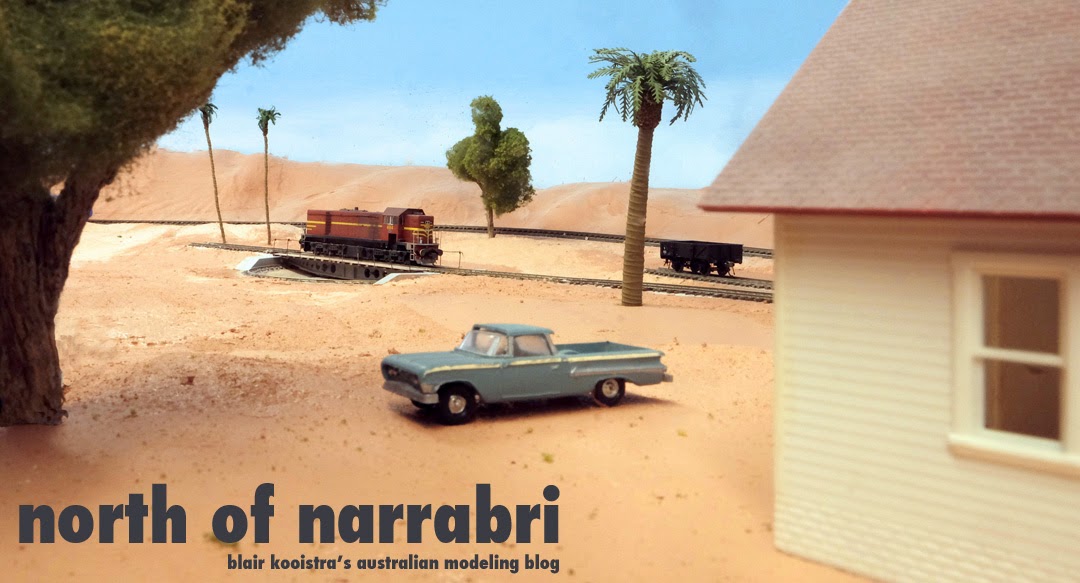
Nice and clean: 44, 47, 49 and 442 class rarin' to go. . .
US modeling Guru J. Anthony Koester created the term "Layout Design Element" as a way to more readily incorporate prototype track plans into our model railways. Essentially, an LDE is a chunk of prototype track arrangement inserted almost "building block" style onto a railroad--the thought being that it is, afterall, the prototype railway that best knows how to design trackage for specific needs. These LDEs can then be rotated, compressed, expanded and edited somewhat to fit in available space while retaining the "flavor" of the prototype and, most importantly, their operational functions.
I'd guess most modelers who base their layouts on a specific prototype do this without giving it a second though--for me, being lazy, I figure why should I do all the hard work of designing trackage for a depot, station or terminal, when the prototype as already done it for me? Compromise must still be made, of course, and while my North-West layout is based on the prototype, I've taken several liberties in order to shrink it to fit in available space.
Here's a look at three stations on my layout: Wee-Waa, on the Narrabri West to Walgett branch; and Edgeroi and Gurley, between Narrabri and Moree. All are based on their prototype, but each have compromises, compressions and omissions in order to get them to fit--hopefully without affecting their operational interest much. Grain siding are long enough to hold five FWH-type hoppers (or six RU's, in the case of Wee Waa). Please excuse the extreme free-hand nature of the drawings.


While the prototype Edgeroi is on a long straight, the model version had to fit into a corner. A strict adoptation of the prototype plan would put the big grain silo complex along the front of the layout, effectively blocking everything behind it. I flipped the track plan 180 degrees to put the silo in the back, where it would form a natural backdrop. Space was at a premium, so I consolidated the stock and goods track, and, again, due to space, eliminated one crossover serving this track and the silo siding. The goods/stock track access is contained entirely between either end of the platform road (crossing loop).


Gurley is a more faithful representation, the main exception being the silo switches are entirely on the downside of the crossing loop--this provides a bit more flexibility for a train switching the silo siding to then either clear up on the crossing loop or depart on the main after their shunting work. To save a bit of space, however, I moved the silo siding inward so the up end of the silo siding is between main track switches.




